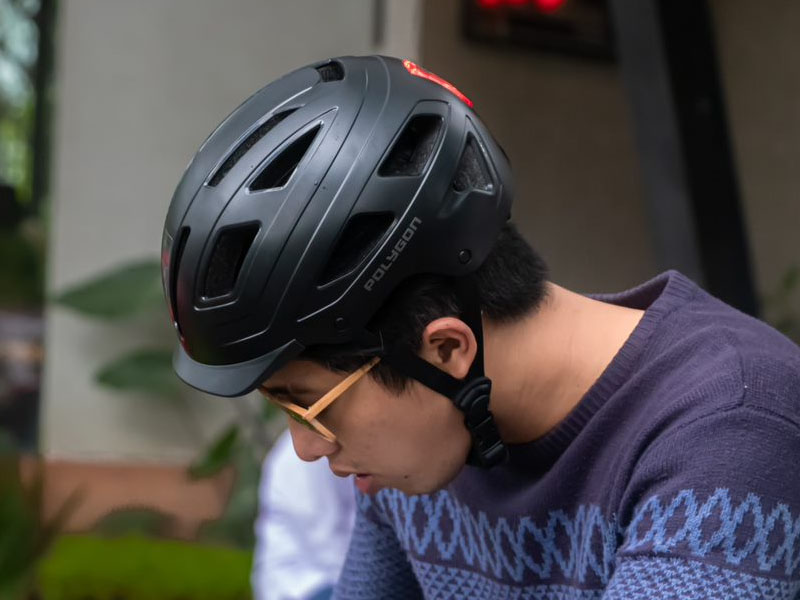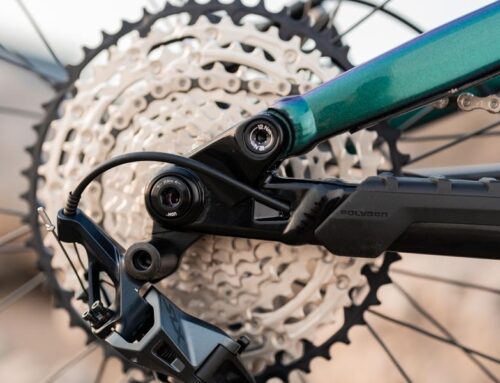When it comes to biking, safety should always be a top priority. Wearing a properly fitting helmet is an essential part of protecting your head from potential injuries. But did you know that even the best helmet has a limited lifespan? Over time, wear and tear can compromise its effectiveness in safeguarding you on the road. That’s why it’s equally important to know when it’s time to replace your helmet.
In this article, we will guide you through the key indicators that signal the need for a new bike helmet. By understanding these signs, you can ensure that you’re always equipped with a helmet that provides optimal protection.
What is the Average Bike Helmet LifeSpan?

The average lifespan of a bicycle helmet is important to consider for replacement purposes. While helmets are designed to be durable, their longevity can be influenced by factors like usage frequency, ride intensity, and exposure to external elements.
Typically, bike helmets are recommended to be replaced every 3 to 5 years. However, it’s crucial to check the manufacturer’s guidelines as they may provide more specific recommendations. Over time, a helmet’s ability to protect diminishes as materials degrade, the foam loses impact-absorbing properties, and structural integrity weakens.
Even if a helmet appears undamaged, it may no longer offer the same level of protection as a new one. Prioritize your safety by staying aware of your helmet’s age and considering timely replacements.
Read more: 4 Easy Guides on Taking Care of Bike Helmets
5 Signs to Replace Your Bike Helmet
In the following sections, we will explore the signs that indicate your bike helmet needs to be replaced. By familiarizing yourself with these indicators, you can make informed decisions about the longevity of your helmet and prioritize your safety while cycling.
1. After Big Crash

One of the most critical instances that warrant immediate helmet replacement is after a significant crash or impact. Immediate helmet replacement is crucial, even if there are no visible signs of damage. The internal structure of the helmet may have been compromised, affecting its effectiveness. The foam inside the helmet is designed to absorb impact, but a severe crash can exceed its capacity. Even a minor crash can affect the helmet’s protective capabilities, as the foam may have absorbed the impact without visible damage. To prioritize your safety, it’s important to replace your helmet after any significant crash, ensuring your head remains adequately protected in future rides.
2. Visible Damage

Visible damage is another clear indication that it’s time to replace your bike helmet. Regularly inspect your helmet for any cracks, dents, or deformities in the outer shell or foam. These damages can compromise the structural integrity of the helmet, making it less effective in absorbing impacts. Even minor cracks or dents can weaken the helmet’s ability to protect your head, so it’s essential not to ignore any visible signs of damage.
For example, if you accidentally dropped your helmet on a hard surface, it may develop visible cracks or dents. Even if the damage appears minor, it can significantly affect the helmet’s ability to withstand impact forces.
Additionally, if you’ve been involved in a crash or collision where your helmet has absorbed a substantial impact, it’s likely that visible damage will be present. In such cases, it’s crucial to replace your helmet to ensure you have reliable head protection.
Read more: 4 Signs to Fix or Replace Your Mountain Bike Wheels
3. Reaching 3-5 Years of Use

As mentioned earlier, the average lifespan of a bicycle helmet is around 3 to 5 years. Over time, the materials in the helmet may degrade, and the foam may lose its ability to effectively absorb impacts. Even if your helmet appears to be in good condition, it’s advisable to replace it once it reaches the 3-5-year mark.
Consider that a helmet exposed to regular use experiences wear and tear, exposure to UV rays, and the accumulation of sweat and moisture. These factors can degrade the materials and compromise the helmet’s protective capabilities.
Furthermore, advancements in helmet technology and safety standards occur over time. By updating your helmet every few years, you ensure that you’re benefiting from the latest advancements in helmet design, such as improved impact absorption, enhanced ventilation, and increased comfort.
4. Damaged Straps

The straps of your helmet are crucial for keeping it securely in place. If you notice any damage or malfunction, it’s important to address it promptly. Assess the extent of the damage and consider your options: replacing the straps or getting a new helmet.
If only the straps are damaged and the rest of the helmet is in good condition, you can opt for replacement straps from reputable manufacturers. Contact them for the appropriate replacements and follow their instructions for installation. However, if the straps are severely damaged or the helmet shows signs of wear, it’s advisable to replace the entire helmet to ensure its structural integrity and safety.
5. Riding Style Change

A change in riding style can signal the need for a new helmet. Different cycling disciplines require specific features and protection levels. For instance, mountain biking or cross country may necessitate a full-face helmet for increased coverage and impact resistance.
Read more: A Comprehensive Guide to Cross-Country Mountain Biking
Road cycling may prioritize aerodynamics with streamlined designs and enhanced ventilation. When your riding style shifts, assess if your current helmet meets the requirements. Consider the necessary protection, design features, and discipline-specific certifications. Upgrading to a helmet that aligns with your new riding style ensures optimal safety and protection during your cycling pursuits.
Discover Wide Range Quality Helmets
Conclusion
Prioritizing safety is crucial when it comes to biking, and replacing your helmet at the right time is an essential part of that. Understanding the signs that indicate the need for a new helmet allows you to make informed decisions and prioritize your safety while cycling.
By staying aware of these 5 signs and promptly addressing any issues, you can ensure that your helmet remains in optimal condition to safeguard you on the road. Remember, your helmet is your most important defense against potential injuries, so make safety your top priority and replace your helmet when necessary.
At Rodalink Singapore, we go beyond just offering high-quality helmets and bike accessories. We provide expert service and guidance to ensure that you have the best cycling equipment for your needs.
We will also help you understand the signs that indicate the need for a new helmet and offer personalized recommendations based on your riding style and preferences. With Rodalink, you can trust that you are receiving not only top-notch products but also expert support to make informed decisions and elevate your cycling experience.







